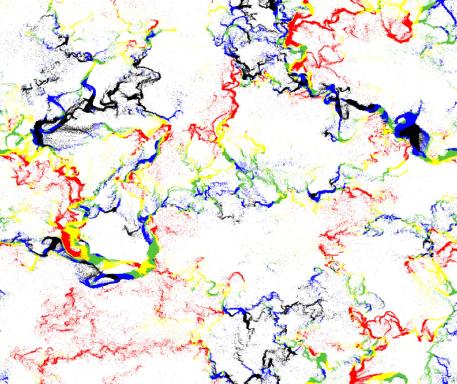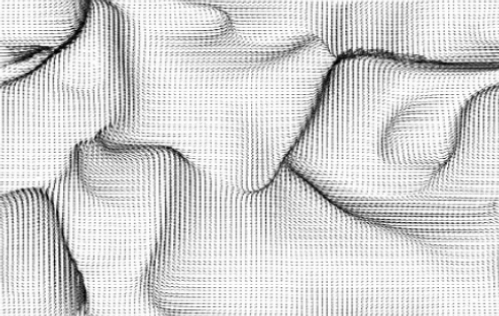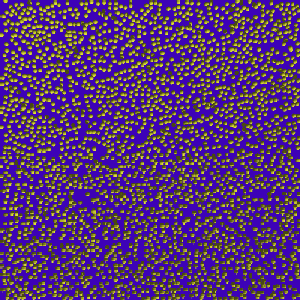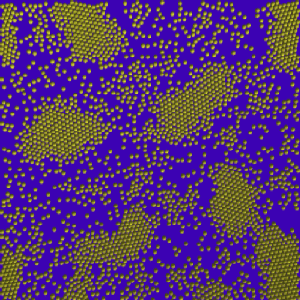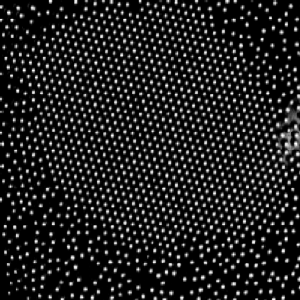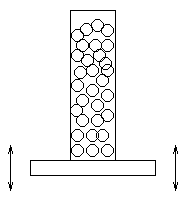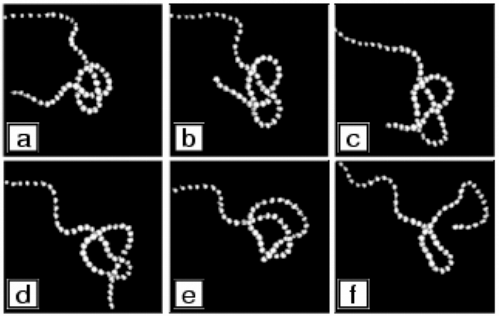
Knots in Granular Chains: (see also quiktime movie (5MB), wmv movie (20MB!), mpeg movie (32MB!), experimental data, pictures, poster): Statisticalproperties of the opening times of knots in vertically vibrated granular chains were studied experimentally and theoretically. The measurements are in good qualitative and quantitative agreement with a theoretical model involving three random walks interacting via hard core exclusion in one spatial dimension. In particular, the knot survival probability follows a universal scaling function which is independent of the chain length, with a corresponding diffusive characteristic time scale. Both the large-exit-time and the small-exit-time tails of the distribution are suppressed exponentially, and the corresponding decay coefficients are in excellent agreement with the theoretical values. The figure shows illustrative snapshots of the vibrated knot experiment, taken at equally spaced time intervals corresponding to ten plate oscillation cycles.
